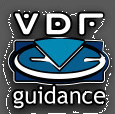Shared knowledge leads to accumulated knowledge |
| |||||||||||||||||||||||||||
Citrix and Visual DataFlexby Filip Huwaert
Citrix and Visual DataFlexby Filip Huwaert What is WTS ?Windows Terminal Server (WTS) is an extension to Microsoft Windows NT server (version 4.0), wich allows WTS clients to connect to the WTS server and run applications on that server. The difference between WTS and a normal Windows NT server is that with a normal NT server the application may be loaded from a share on that server but actually runs using the workstation processor, memory and disks. In a WTS environment the application(s) run using the WTS's processor, memory and disk, while its keyboard, screen and mouse I/O for that application takes place on that WTS client. This way of working is also called the "Server-based Computing Model" . So, WTS is a true multi-user operating system, wich allows multiple concurrent users to log and run applications in separate, protected sessions on a single server. What is Metaframe (also called Citrix) ?Metaframe is a software package that runs on WTS. Installing Metaframe extends WTS with the following functionalities :
A few of these benefits more in detail : Bandwith- Independent Performance
Ica, the unique Citrix server-based computing protocol, typically consumes between 10 and 20kb per second of network bandwith and is optimized for connections as low as 14.4 kbps. Therefore, ervery remote user can experience connections as low as 14.4 kbps. Therefore, every remote user can experience LAN-like performance, even with 32-bit applications over analog or ISDN modems, WAN's or the internet. Seamless Desktop Integration
With metaframe, users gain complete access to local system resources such as disk drives, printers, ports, audio and the windows clipboard, even though applications are running remotely on the server. Conseqeuntly, users get the familiarity of their local desktop. Starting a local application is as easy as starting a remote application ( he doesn' see the difference) by double clicking a familiar desktop icon. Additionally, users can enjoy the benefits of local printing, local file access, and the ability to cut, copy and paste between local and remote applications. Any Client Device
Metaframe extends to virtually any client device trough the use of Citrix ICA Client software. Client devices include 286, 386, 486 and pentium based Pc's, windows based terminals, network computers, wireless devices, ICA-based information appliances, Apple macintosh systems, UNIX - based computers and X-based devices. Metaframe suppoprt all types of windows clients WVW, Windows95/98, Windows NT en Windows CE. Metaframe also supports Dos, UNIX,OS/2 Warp, MAC OS and Java clients. Server requirements
Because the aplications run on the server, is the choice of the hardware verry important. The exact hardware requirements depend primarly on the number of users and applications there will be running on the server. This is what you must have in mind :
A Task based user typically runs a single application that is not processor intensive. An example of this may be a terminal emulator A typical user maybe run two applications that are not processor heavy (such as a spreadsheet or word processor) but only active at one applictaion at a time. Users that require OLE for their operations will be classed as advanced users. An advanced user will typically run 3 or more applications simultanously and more than one of these applications will be processing at anyone time. Memory requirements :
For the base operating system : 64 Megabytes For each Task Based User : 8 Megabytes For each typical user : 16 Megabytes For each power user : 24 Megabytes Installing applications on metaframe 1.8
Installing Visual Dataflex applications on metaframe
I have the experience that when I use the shortcut directly to my program and I have multiple users running my application on a metaframe server, it doesn't work. Only one user was allowed using my application.
|
||||||||||||||||||||||||||||
|
||||||||||||||||||||||||||||
Copyright © 1999 - 2025 VDF-GUIdance on all material published, for details see our Disclaimer. |
||||||||||||||||||||||||||||


